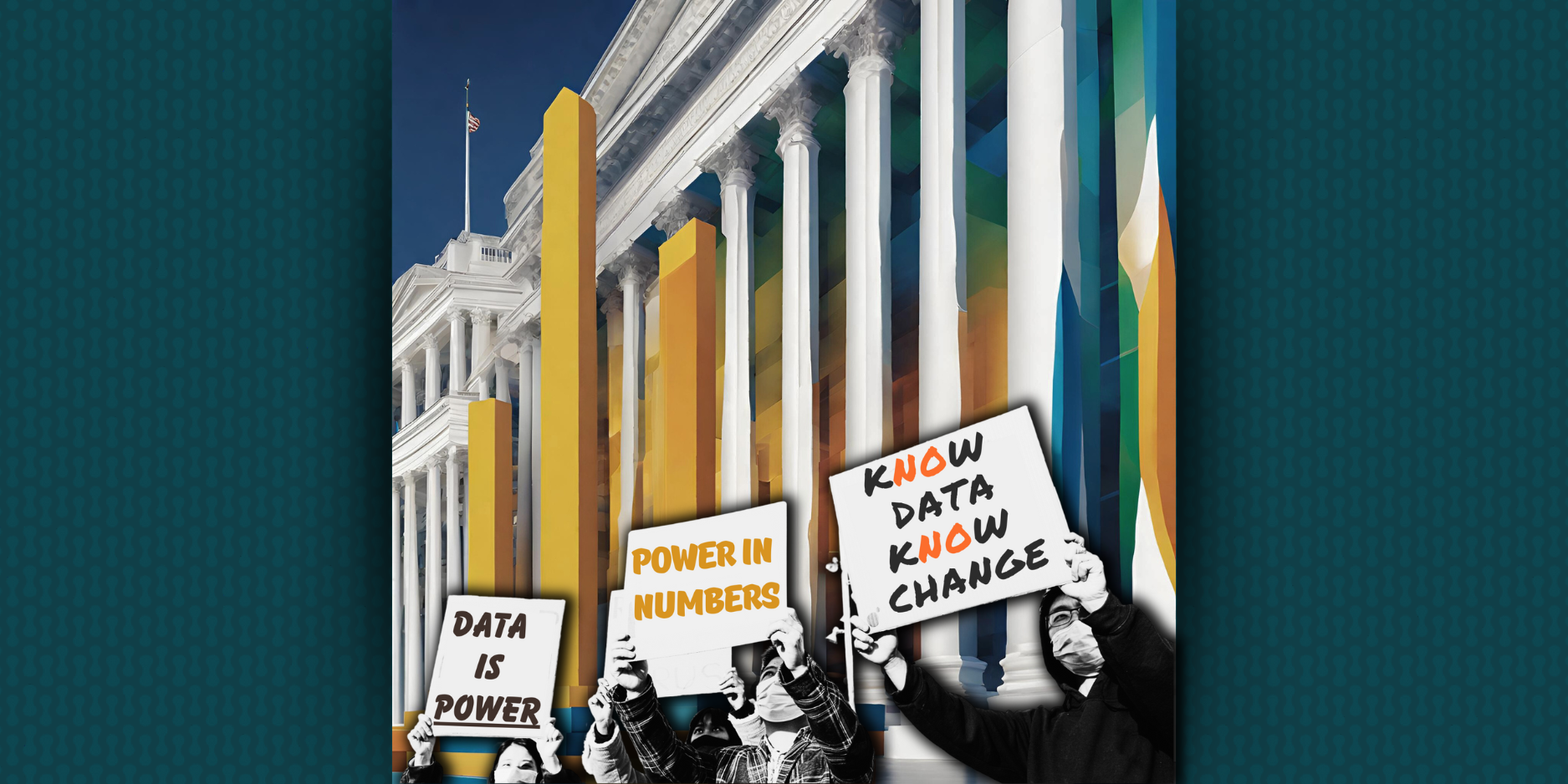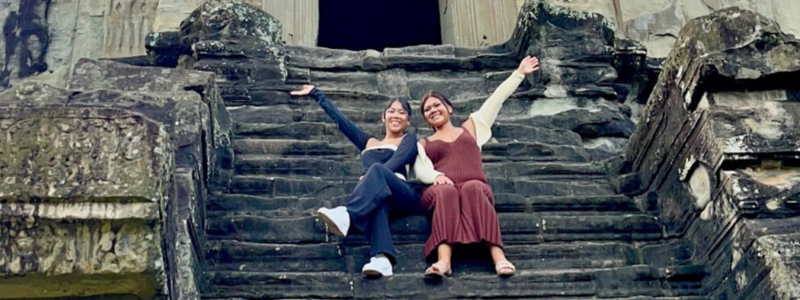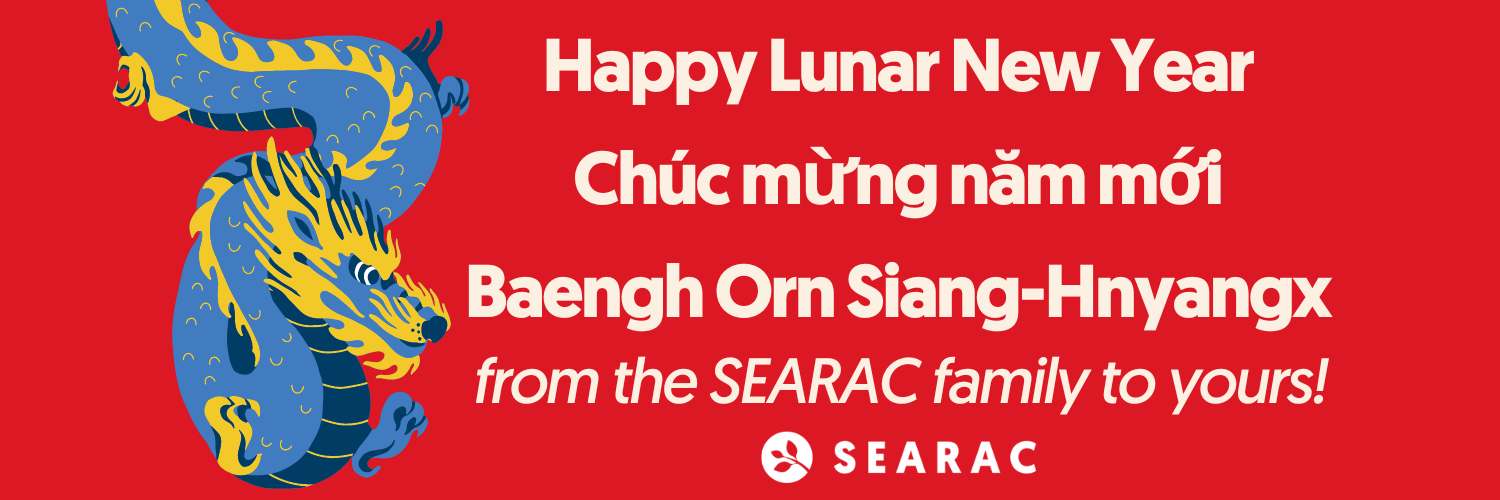June 20, 2023 IN: Staff Blog
Celebrating Pride Month: Part 1

This month, SEARAC Communications intern Sou Saechao connected with a few members of SEARAC’s board to discuss their reflections on Pride Month and its intersectionality with Southeast Asian American activism.
For his first interview in this two-part series, Sou sat down with SEARAC Vice Chair Vân Huynh, a queer Vietnamese American, born in Saigon. She is an immigration attorney, having co-led several high profile deportation defense cases and whose legal and advocacy work strives to build movements with organizers in order to effectively address root causes of criminalization. She has been involved with Asian Americans Advancing Justice-Chicago and Atlanta, PASO-West Suburban Action Project, the National Asian Pacific American Bar Association Law Foundation, and the Georgia Latino Alliance for Human Rights (GLAHR) – all working to organize immigrant communities and to connect with Black-led organizing.
Check out their full Q&A below:
Sou: What does Pride Month mean to you?
Vân: As a queer person, Pride is a good time for me to reflect on the gains we’ve made as a community. It’s a good moment for me to take a step back and think about all of the rights and freedom that I have as a queer person that didn’t always exist. I’m grateful for the activism and the hard fought battles for queer people in this country and I think that is something that remains to this day. Part of it is feeling grateful and the fact that I could be married to a woman knowing the freedom didn’t exist even 10 years ago. When I was growing up, there were still a lot of biased views, discriminations, and prejudices against queer people. At least living in Chicago, there is more freedom around that. I think Pride Month is a really good month to reflect on that. For me, doing the work of advocacy and organizing and thinking of ways where I could show up better for people who are still being discriminated against today, what we see in our current political moment is a lot of backlash against transgender people and those who are nonbinary. A lot of the rhetoric and narrative is very reminiscent of the rhetoric that I was hearing when I was growing up [about gay and lesbian people]. What we often see is a celebration but another part is knowing that there is a lot more we have to do to support queer folks as a whole.
Sou: Has Pride Month changed for you throughout the years?
It’s interesting because my first exposure to Pride was actually in San Francisco. Being able to attend Pride there was really life-changing for how huge it was. But then over time I see how Pride has been commercialized. Initially I was seeing a lot more white people showing up. I remembered being taken aback by the Pride parade because it reminded me a lot of Coachella or just White people celebrating Pride. But when I came to Chicago there were celebrations like the Chicago Dyke March that uplifted and prioritized the presence of the BIPOC community and queer people of different looks and genders and make-ups that didn’t exist in the more commercialized Pride parade. Over the years, it is definitely a part of my political identity. I think about it as a celebration and coming together as a community, but also there is a political message that we don’t want to forget in our celebration. Over the years, it’s been more solidified in that way.
Sou: What does it mean to be both queer and Southeast Asian?
Vân: I was reflecting on that a lot because May was AANHPI Heritage Month and June is Pride Month. Oftentimes in this country, we are asked to show up in our individual identity. As a queer Southeast Asian person I think about how to bring all of that together because I can’t separate those two. In the month of May, what would it mean to celebrate queer Southeast Asian Americans. For Pride, what would it mean for Southeast Asian Americans and the Asian American communities as a whole to also celebrate queer people knowing that queer folks have always existed in our communities. I remember growing up with transgender people and nonbinary people in my community. People didn’t bat an eye about it. There wasn’t any strong discrimination. I think people understood that they were part of our community. Over time it feels like we’re not inclusive of all these different identities. Even now with SEARAC, I think about how we uplift the queer folks who are in leadership positions whether they are serving as board members or staff. This is also a part of our Southeast Asian American community. Queer people are here. We’ve been here throughout the years. But I think particularly in Pride Month for our folks to show out and stand up for queer issues as a whole knowing that queer issues are also affecting Southeast Asian Americans.
Sou: How has being a part of the LGBTQ+ community shaped/influenced your work?
Vân: Within Asian American organizing we talk a lot about visibility, needing to show that Asian Americans are also impacted by particular issues. For myself, I don’t always get read as a queer person. For people who could read me, they see me as an Asian American person or a Vietnamese American person for example. So it is important for me to be visible with my queerness, including in Asian American spaces. A huge part of that is openly talking about it. I like to talk about it a lot, whether it’s among my staff or in community, what it means for a queer woman of color to be in a position of power, and to be visible with my community in that way. I need people to understand that queer people are here and lead on the issues we’re working on.
Sou: What do you want to tell other LGBTQ+ Southeast Asian American community members?
Vân: I understand how difficult it is to live in different worlds. Whether you’re in the Southeast Asian American community or the queer community, there are certain expectations that are imposed on us often. An example with the queer community, everyone reinforces the importance of coming out, such as coming out to your parents, coming out to your family. That is a very difficult thing for Southeast Asian American communities for a variety of reasons. As much as I talked about the gains and the celebrations, I also understand the violence against queer people still exists within our communities because of the histories and a lot of work still needs to be done within the Southeast Asian American community. Another is, in the Southeast Asian American community, our family expects a lot from us. A lot of different expectations are imposed on us. But I’d like to tell Southeast Asian Americans, you can define for yourself how you want to be perceived in the world and what you choose to share – and that doesn’t diminish your identity and experiences. It takes time to figure out what it is that you’re comfortable with and what you want to share with the world knowing you’re balancing a lot of different viewpoints.
For more blogs in our Pride Month blog series, see: “Celebrating Pride Month: Part 2”





